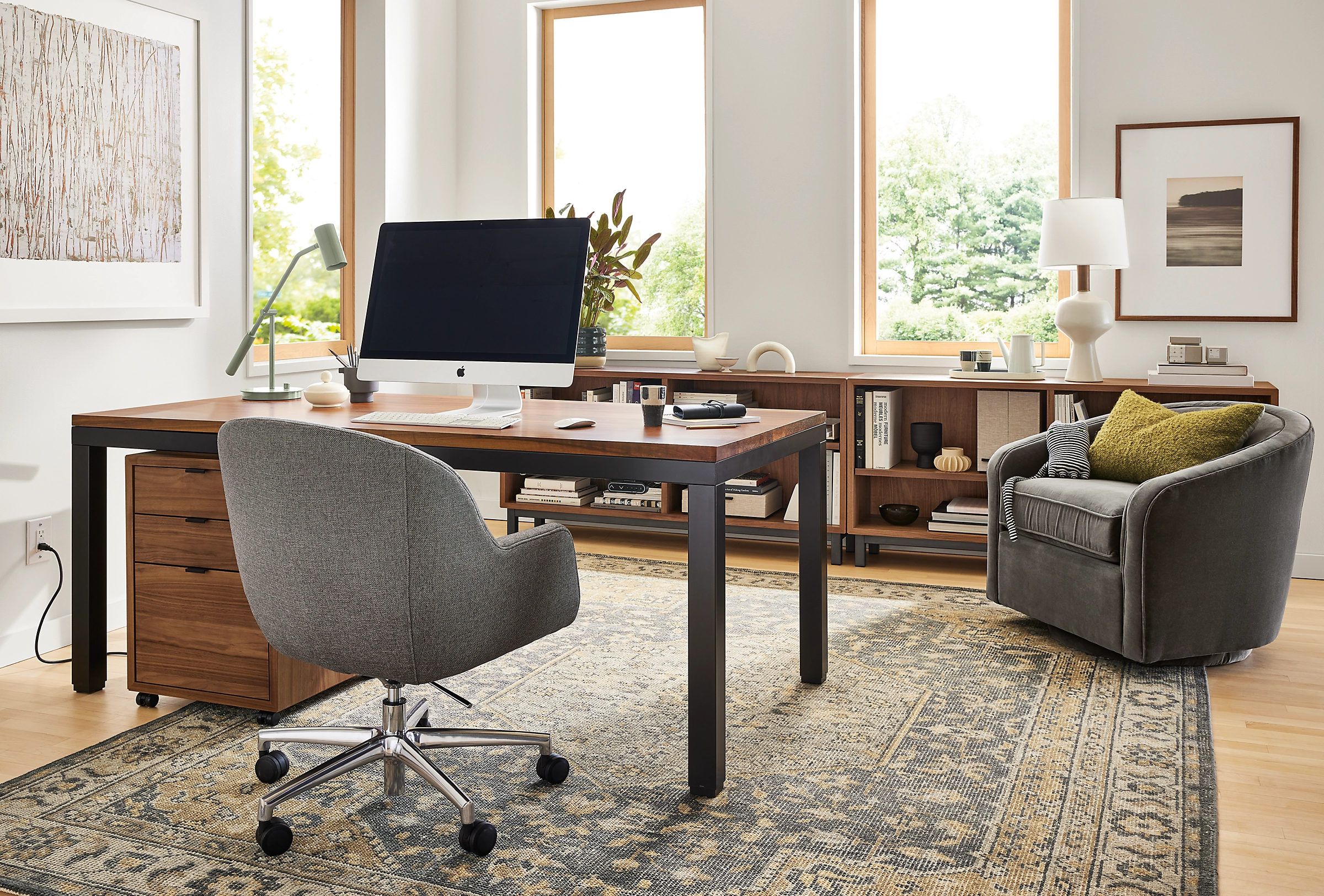**Ergonomic Office Setup: How to Improve Comfort and Reduce Strain While Working**
In today’s modern workplaces, many of us spend a significant amount of time sitting at our desks, which can lead to discomfort and strain on our bodies if not properly set up. However, by following ergonomic principles, you can create a workspace that promotes comfort, productivity, and overall well-being. Here’s how to improve comfort and reduce strain while working with an ergonomic office setup:
**1. Start with the Right Chair:**
Invest in an ergonomic office chair that provides adequate support for your back, hips, and legs. Look for a chair with adjustable seat height, lumbar support, armrests, and seat depth. Ensure that the chair is comfortable and promotes good posture, with your feet flat on the floor or a footrest, knees at a 90-degree angle, and thighs parallel to the ground.
**2. Position Your Desk and Monitor:**
Position your desk and monitor in a way that promotes proper posture and reduces strain on your neck and shoulders. Place your monitor directly in front of you at arm’s length away, with the top of the screen at or slightly below eye level. Use a monitor riser or adjustable stand to achieve the desired height and angle. Position your keyboard and mouse close to the edge of the desk and at elbow height to maintain a neutral wrist position.
**3. Adjust Your Chair and Keyboard Tray:**
Adjust the height of your chair and keyboard tray to ensure that your elbows are at a 90-degree angle and your wrists are straight while typing. Keep your shoulders relaxed and your forearms parallel to the ground. If necessary, use an ergonomic keyboard tray to achieve the proper height and angle for typing comfortably.
**4. Take Regular Breaks and Move:**
Avoid sitting for prolonged periods by taking regular breaks to stretch and move around. Set reminders to stand up, stretch, and walk around for a few minutes every hour. Incorporate simple exercises like shoulder rolls, neck stretches, and wrist rotations to relieve tension and improve circulation. Consider using a standing desk or adjustable desk converter to alternate between sitting and standing throughout the day.
**5. Use Proper Lighting and Reduce Glare:**
Ensure that your workspace is well-lit with natural or adjustable lighting to reduce eye strain and fatigue. Position your desk lamp or overhead lights to provide even illumination without casting shadows or glare on your monitor. Use window blinds or curtains to control natural light and reduce glare, and consider using an anti-glare screen filter for your monitor if necessary.
**6. Organize Your Workspace Efficiently:**
Keep your desk organized and clutter-free to minimize distractions and improve focus. Use desk organizers, file trays, and storage bins to keep frequently used items within easy reach and maintain a tidy workspace. Arrange your desk layout to optimize workflow and minimize unnecessary reaching or twisting movements.
**7. Support Your Lower Back with a Lumbar Pillow:**
If your chair lacks adequate lumbar support, use a lumbar pillow or cushion to support the natural curve of your lower back and maintain proper spinal alignment. Position the lumbar support pillow at the small of your back while sitting to relieve pressure and reduce strain on your lower back muscles.
**8. Use Ergonomic Accessories:**
Consider using ergonomic accessories such as a height-adjustable monitor stand, ergonomic keyboard and mouse, and a gel wrist rest to enhance comfort and reduce strain while working. Choose accessories that are designed to support your body’s natural alignment and promote healthy posture.
**9. Stay Hydrated and Practice Good Posture:**
Stay hydrated throughout the day by drinking plenty of water to prevent dehydration and maintain focus and energy levels. Practice good posture by sitting up straight, keeping your shoulders relaxed, and aligning your ears, shoulders, and hips in a straight line. Avoid slouching or leaning forward, and take regular posture breaks to reset your alignment if needed.
**10. Listen to Your Body and Seek Help if Necessary:**
Pay attention to any signs of discomfort or strain in your body, such as neck pain, shoulder tension, or wrist discomfort, and make adjustments to your workspace accordingly. If you experience persistent pain or discomfort, seek advice from a healthcare professional or ergonomic specialist for personalized recommendations and solutions.
By following these ergonomic tips and implementing proper workstation setup techniques, you can create a comfortable and supportive workspace that promotes productivity, reduces strain, and enhances overall well-being while working. Remember to prioritize your health and make adjustments as needed to ensure a safe and ergonomic working environment.



